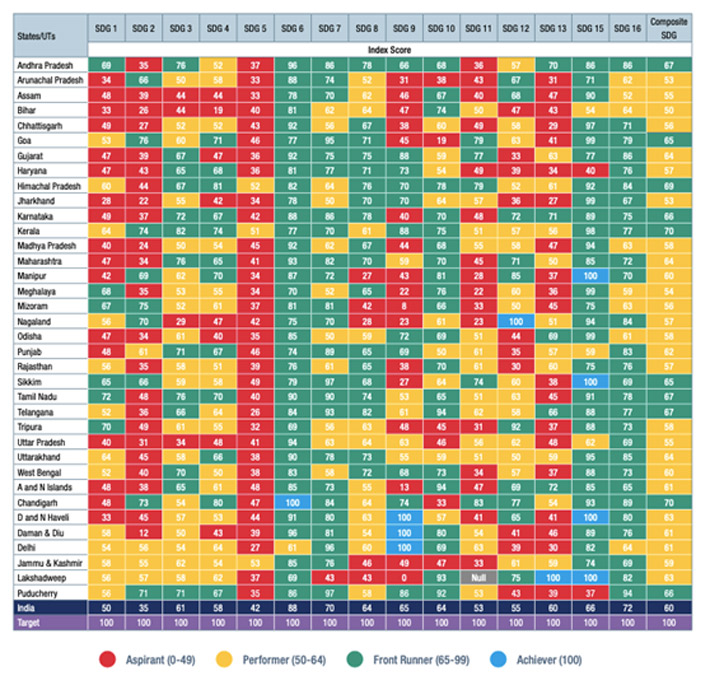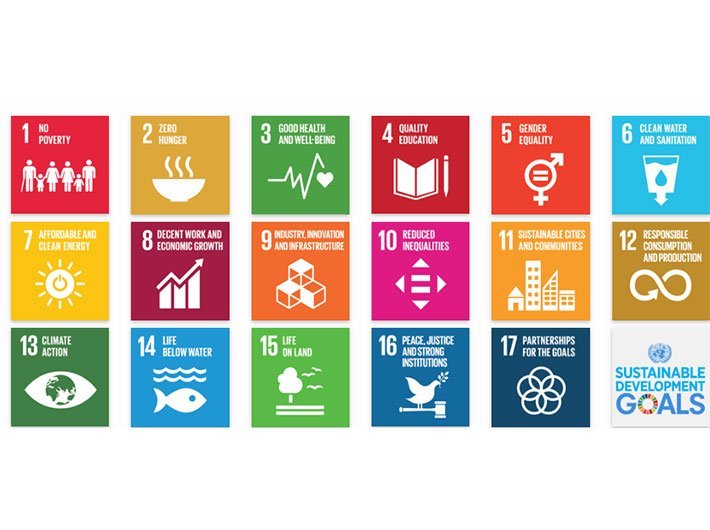On SDG 2030, India will have to recalibrate priorities and set more realistic timelines
The continuing spread of COVID-19 has emerged as the biggest roadblock to development in 2020. Citizens across the globe have been breathing an air of panic, fear, and confusion, not knowing what lies ahead. The pandemic has hit some communities and countries harder than the others, requiring everyone to unite in this war against the virus and do their bit. The developing countries in particular, have been dealing with a huge pile of undelivered promises, especially in the health sector.
The pandemic has highlighted the underfunded and crippling structure of India’s healthcare system, and its inability to serve its poor and vulnerable populations. Moreover, this pandemic has resulted in an almost complete cessation of economic activities, investment, and employment. It has affected global economies and their core development challenges on a large scale, the impact of which is bound to be seen on the UN Sustainable Development Goals (SDGs). These 17 carefully designed goals have a timeline to be achieved by 2030, the commitment to which seems to be dwindling during this year’s crisis. The aim of the SDGs is to make our planet a sustainable and healthy place to live and prosper. The question now is whether we can maintain this commitment, or will the pandemic rewind our progress?
Proactive measures were taken to work ambitiously on achieving the targets, the positive results of which have been seen worldwide. Globally, there has been a reduction in extreme poverty and under-age-five mortality, and policies toward sustainable consumption, production, and rapid urbanisation have seen improvement and action (NITI Aayog, 2019). As the top priority right now is to contain the spread of the virus and protect citizens while also protecting the economy from falling, policymakers and officials across the globe have a difficult task at hand. An estimated 34.3 million more people are likely to fall below the extreme poverty line in 2020, which is bound to derail the progress toward the 2030 development agenda (UN, 2020). The pandemic might have caused a slowing down of our efforts to achieve these goals, but it has proved the great importance these goals hold. This situation further stresses the critical need to ensure SDG targets are met and worked toward, as those are the very things which will protect our economies and our people against such pandemics and unfortunate events in the future.
Looking at India’s progress toward the 2030 agenda, Niti Aayog’s SDG India Index report offers a comprehensive assessment of all states and UTs so far. While India might not be a front runner in achieving all seventeen goals, considerable progress and improvement have been made in a lot of areas, as shown in the accompanying chart. We can see how states show varied results in terms of different goals till 2019. The SDGs #6 (Clean Water & Sanitation), #7 (Affordable & Clean Energy) and #16 (Peace, Justice, & Strong Institutions) seem to be performing well with a majority of states on a good track per the analysis. SDGs #1 (No Poverty), #2 (Zero Hunger) and #5 (Gender Equality) are the most problematic areas, having shown rather slow progress.
These three also represent the core challenges faced by the country and may be even harder to address due to the pandemic. As these fundamental challenges aggravate any natural or manmade disaster, it is deeply critical to work toward their improvement with greater vigour and force. While some goals were on the right track and some witnessed shaky progress, the pandemic has surely cast a dent in the 2030 agenda. As the overall progress of Indian states has not been exemplary, tackling the pandemic and its effect on slowing down the progress made so far can result in harm to the Indian economy.

Performance of State and UTs on SDGs
Source: NITI Aayog
Instead of trying to achieve all SDG targets as much as possible at the same time, India surely needs to recalibrate and set much more realistic timelines as to when each of these goals can be achieved. Strengthening efforts for select SDGs relating to hunger (SDG #2), health (SDG #3), and Economic Growth (SDG #8 & #9), for example, can help the country come out of the present chaos and positively affect other goals as well. Rising hunger is a matter of urgent concern that has been exacerbated by the pandemic. Eliminating hunger will not only lead to a healthier population, but also positively affect the agricultural sector and improve India’s productivity and food distribution mechanisms. Robust supply chain networks, better and inclusive PDS mechanisms, as well as improved nutritional outcomes for all Indian households cannot be achieved without a combination of policies, economic growth, and agricultural research to push this forward.
Apart from hunger, healthcare is by default an immediate concern for the country. Building more public health infrastructure and providing hospitals with the equipment required to cater to the underserved population has been prominently highlighted by the pandemic. While the government has been pooling more funds for the sector, increasing transparency and accountability in the system should be sought. Another immediate result of the pandemic has been a surge in unemployment, which reached a peak of 27.1 percent in May (TNN, 2020). Witnessing the slow growth of economic activities in both urban and rural areas, SDG #8 (Decent Work & Economic Growth) and SDG #9 (Industry, Innovation, and Infrastructure) hold priority and should be on top of the government’s agenda. This will help citizens survive in the short run, and also ensure decent work that will help individuals come out of any future crisis as well.
These three selected sectors represent the urgent needs of Indian citizens that should be dealt with to revive the economy. Though more focus must be given to these areas, other SDGs cannot be neglected, and efforts in the short term to maintain, if not improve, their progress need to be looked at. During the panic and rush to address a pandemic, mismanagement and chaos must be avoided. The Indian government recognizes four crucial areas of action in achieving the SDGs: improving the statistical system, monitoring at the local level, capacity building of stakeholders, and SDG financing (GoI, 2020). Efforts are ongoing to localize the SDGs as much as possible for effective implementation and most importantly to ensure that no one is left behind on this road to development.
The Voluntary National Review 2020, prepared by NITI Aayog, highlights these issues, and its preparation itself reflects the positive outlook of the government in involving marginalized and excluded communities in institutionalized dialogues for regular feedback and assessment of its actions. As this is a positive step toward inclusive development, India’s strategy entering the “Decade of Action” needs to measure the priorities and take into account immediate actions as well as long-term goals that will ultimately affect the progress of the nation and the prosperity of its citizens. These challenging times make it even more important for us to work on the SDGs, which will help to shield our people, environment, and economies against similar future uncertainties.
Sharma is a research associate with SM Sehgal Foundation, a non-profit working on rural development issues.
References
1. Ghosh, N. 2020. How COVID19 will affect sustainability and the UNSDGs. Observer Research Foundation. Accessed on 23 May 2020. Available at https://www.orfonline.org/research/how-covid-19-will-affect-sustainability-and-the-unsdgs-63947/
2. Government of India. 2020. India VNR 2020: Decade of Action, Taking SDGs from Global to Local. NITI Aayog, New Delhi.
3. NITI Aayog. 2019. SDG India: Index and Dashboard 2019-2020. Accessed on 23 May 2020. Available at https://niti.gov.in/sdg-india-index-dashboard-2019-20.
4. United Nations. 2020. World Economic Situation and Prospects as of mid-2020. Accessed on 23 May 2020. Available at https://www.un.org/development/desa/dpad/wp-content/uploads/sites/45/publication/WESP2020_MYU_Report.pdf.
5. TNN. 2020. Jobs returning, unemployment rate back at pre-lockdown levels. Times of India. Accessed on 26 June 2020. Available at
https://timesofindia.indiatimes.com/business/india-business/cmie-unemployment-rate-back-to-pre-lockdown-level-of-8-5/articleshow/76540727.cms
